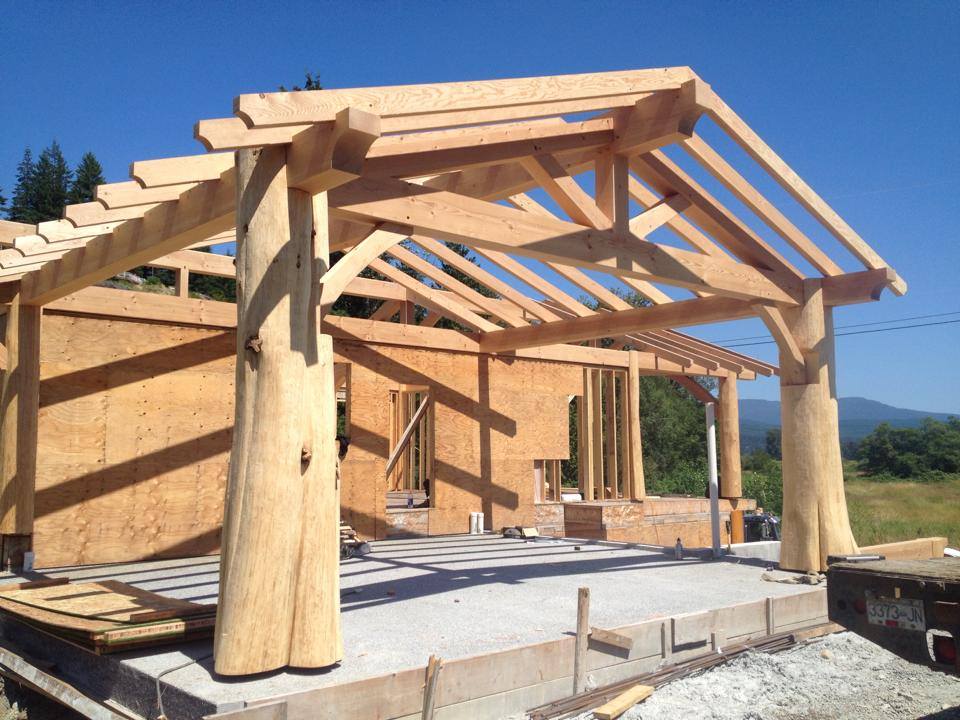Understanding the difference between construction mortgages and traditional mortgages
Buying any home usually requires financing. When it comes to building a custom home you may require additional financing options such as a construction mortgage.
A construction mortgage is a short-term mortgage that serves to aid in covering the cost of the initial construction of your home. Once the building of your home has reached a certain stage or is complete you would likely roll your construction mortgage into a traditional home mortgage or another form of financing.
We tend to get some questions about how construction mortgages work so here is a breakdown on how construction mortgage differ from a traditional mortgage. We strongly suggest that you speak to your local lender or financial institution as regulations and lending options may differ in your area. If you’d like help putting together a budget you can download our FREE log home budget worksheet and guide.
What is a mortgage? How does it work?
A mortgage is a type of loan through a financial institution used to traditionally help an individual purchase a home or residence. A lien is placed on the property as collateral for the money being lent. This means that if payments on the mortgage are unable to be made that the home can be taken by the lender. Monies can be lent up to a percentage of the home and property’s current value, typically up to 80% (speak to your financial institution for full details).
Here are the typical steps that you may experience when applying for a traditional mortgage.
- You decide between a mortgage broker, bank, or private lender.
- You apply for a mortgage loan.
- You provide evidence that you have the funds for downpayment and income for mortgage payments.
- You get pre-approved for your mortgage.
- You decide on your mortgage rates and timeline.
- You receive your mortgage funds as a sum.
- You purchase a property and pay a downpayment.
- You submit mortgage payments based on your rate and schedule, typically monthly.
How a construction mortgage works:
A construction mortgage is a loan borrowed to finance the building of a home. This typically does not include the purchase of the raw land. Many financial institutions will release funds to you incrementally which helps to keep you on budget and reduces your payments. As the property is being built only interest payments are normally required on the construction mortgage. Once the construction has been completed the mortgage is rolled into a traditional mortgage with set monthly payments that include interest and principal.
Below is the typical process you will go through when applying for a construction mortgage.
- You decide between a mortgage broker, bank, or private lender.
- You will essentially have two mortgages. One during the build (a construction mortgage) that will transition into a regular mortgage upon completion.
- You need more detailed information on hand to apply for a construction mortgage, including:
- A building contract that outlines the approximate costs
- Construction plans or a blueprint of the home
- Quotes for labour and materials purchased
- Site preparations such as municipal services needed for the lot or for the land
- Evidence of property ownership: deeds, land titles, or a copy of the purchase and sale agreement
- Confirmation of income/employment
- A credit check
- You apply for a construction mortgage loan.
- You purchase the land first.
- You submit a downpayment on the value of the land and the estimated costs of the project from your builder. Note: This can vary depending on if you already own the land or require financing for it as well.
- Your construction mortgage funds will not be available all at once. They will be released in stages called “drafts” when your home completes pre-determined benchmarks in its construction.
- Each benchmarks completion will be confirmed by an appraiser before you receive the next round of funds.
- When building a log home, the log home builder you choose will typically ask for 90 to 100% of the log shell be paid for before it leaves the manufacturing yard. This payment will usually be due before you get your second construction mortgage draw. Often banks aren’t aware of this, so make sure that your log home contract includes detailed payment schedules and anticipated payment dates.
- After your home is built, your construction mortgage is complete. You now transition into a typical home mortgage and consider new rates and timelines.
- You submit mortgage payments based on the appraised value of your completed home, your rate, and schedule.
Things to be prepared for with a construction mortgage:
- Since the timeline is shorter for construction than for a traditional mortgage, the rates and down payment required are usually higher than with regular mortgages. Typically, one to two years is given to complete a construction mortgage versus 20-25 years for a normal mortgage.
- You need to include funds in your budget for unexpected costs as well as additional professional services, such as lawyers and architects. It’s important to have a lot of buffer room because unexpected costs might stop you from reaching the next “draft” release and halt construction.
- Depending on where you live, you may consider construction loans as well as mortgages.
- It can be much more difficult to receive a construction mortgage as there is greater uncertainty in the lender’s investment. The home doesn’t even exist yet. This is why having enough of your own funds and a well-organized plan are key. A good builder goes a long way with their reputation at this point.
Rules and regulations may differ depending on your location. Please ensure you consult your local financial institution or lending provider for the particular regulations in your area.
If you have any questions about building log homes or financing available in your area, please contact us and we’ll assist in any way we can.
Relates Articles


